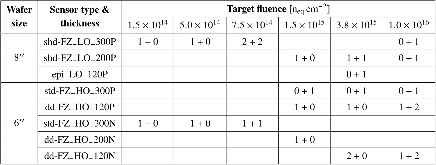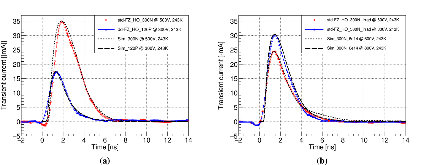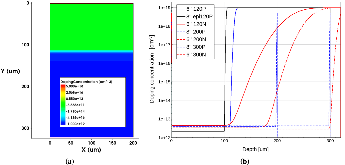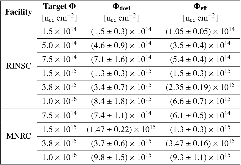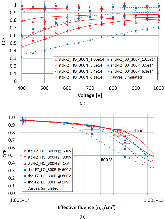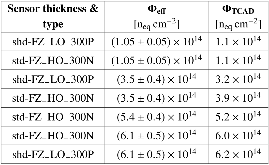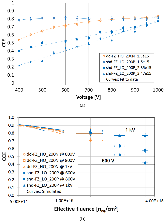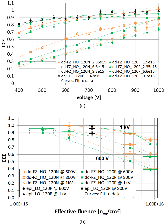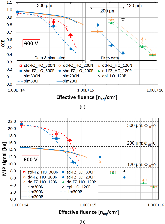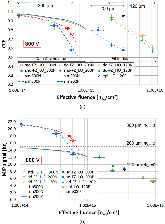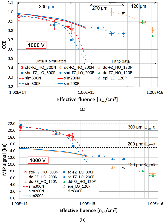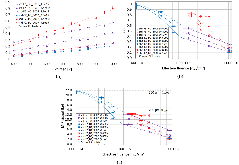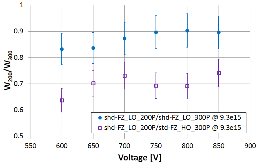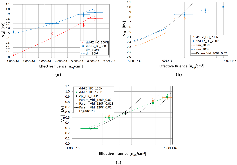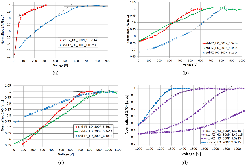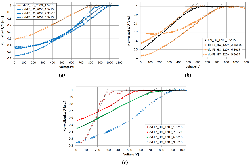Charge collection and electrical characterization of neutron irradiated silicon pad detectors for the CMS High Granularity Calorimeter
- Texas Tech Univ., Lubbock, TX (United States)
- European Organization for Nuclear Research (CERN), Geneva (Switzerland)
- Brown Univ., Providence, RI (United States)
- Fermi National Accelerator Lab. (FNAL), Batavia, IL (United States)
- Inst. für Hochenergiephysik, Vienna (Austria)
- Univ. of California, Davis, CA (United States)
- Florida State Univ., Tallahassee, FL (United States)
The replacement of the existing endcap calorimeter in the Compact Muon Solenoid (CMS) detector for the high-luminosity LHC (HL-LHC), scheduled for 2027, will be a high granularity calorimeter. It will provide detailed position, energy, and timing information on electromagnetic and hadronic showers in the immense pileup of the HL-LHC. The High Granularity Calorimeter (HGCAL) will use 120-, 200-, and 300-μm-thick silicon (Si) pad sensors as the main active material and will sustain 1 MeV neutron equivalent fluences up to about 1016 neq cm-2. In order to address the performance degradation of the Si detectors caused by the intense radiation environment, irradiation campaigns of test diode samples from 8-inch and 6-inch wafers were per- formed in two reactors. Characterization of the electrical and charge collection properties after irradiation involved both bulk polarities for the three sensor thicknesses. Since the Si sensors will be operated at -30°C to reduce increasing bulk leakage current with fluence, the charge collection investigation of 30 irradiated samples was carried out with the infrared-TCT setup at -30°C. TCAD simulation results at the lower fluences are in close agreement with the experimental results and provide predictions of sensor performance for the lower fluence regions not covered by the exper- imental study. All investigated sensors display 60% or higher charge collection efficiency at their respective highest lifetime fluences when operated at 800 V, and display above 90% at the lowest fluence, at 600 V. The collected charge close to the fluence of 1016 neq cm-2 exceeds 1 fC at voltages beyond 800 V.
- Research Organization:
- Fermi National Accelerator Laboratory (FNAL), Batavia, IL (United States); Texas Tech Univ., Lubbock, TX (United States)
- Sponsoring Organization:
- USDOE Office of Science (SC), High Energy Physics (HEP)
- Grant/Contract Number:
- AC02-07CH11359; SC0015592
- OSTI ID:
- 1638956
- Alternate ID(s):
- OSTI ID: 1825026
- Report Number(s):
- arXiv:2005.08051; FERMILAB-PUB-20-297-CMS; oai:inspirehep.net:1796823; TRN: US2201824
- Journal Information:
- Journal of Instrumentation, Vol. 15, Issue 09; ISSN 1748-0221
- Publisher:
- Institute of Physics (IOP)Copyright Statement
- Country of Publication:
- United States
- Language:
- English
Similar Records
The DAQ system of the 12,000 channel CMS high granularity calorimeter prototype
Charge collection study with the ATLAS ITk prototype silicon strip sensors ATLAS17LS



